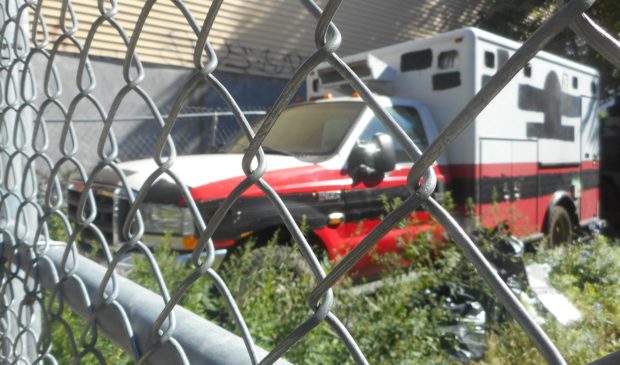Equity study attempts to mitigate long-standing health disparities
Friday, November 19, 2021 by
Samuel Stark A new report by a city-appointed firm found that local medical and emergency service providers could do more to help address sharp health disparities in East and West Austin.
The equity study, which was completed this summer by Public Consulting Group, examined Austin-Travis County Emergency Medical Services and the Austin Fire Department with an eye toward addressing health disparities and developing more proactive intervention strategies.
The report proposes 41 specific initiatives to help reduce cardiac arrest deaths, medical issues related to chronic illness, and health care delivery.
Travis County’s Chief Medical Officer Mark Escott presented the results and recommendations from the study to the EMS advisory board earlier this month, during which he detailed some of the suggested changes. The study was approved by City Council in 2020 and completed in July 2021.
“ATCEMS looked at the data from 2018 and 2019 and found that if a person lived on the east side, they were 50 percent less likely to survive (a cardiac arrest) compared to national averages,” Escott said.
In contrast, data Escott provided shows that those living on the west side are 50 percent more likely to survive a cardiac arrest compared to national averages.
The overarching goal of the study was to explore what resources could be allocated to areas where health outcomes are poor yet might be improved by more proactive prevention strategies, he said.
“What is also higher (east of Interstate 35) is significant underlying unaddressed health conditions,” Escott said.
These conditions, such as diabetes, hypertension and obesity, are not uncommon across ZIP codes, including more affluent ones, in Travis County. The difference is that residents on the west side are more likely to have access to treatment to better manage their symptoms, while people on the east side are less likely to have access to health care in general.
“Right now, the U.S. has a passive model of health care,” Escott said. “We build structures and say, come to me and I will provide you care.” This is in contrast with a model that promotes going into communities to assess people’s health before they become ill and are forced to call emergency services, another exorbitant cost.
People who don’t have health care “don’t need a $1,000 trip to the hospital with a $2,000 or $3,000 bill when they’ve got a $50 problem,” Escott said.
Of the 41 recommendations the study team proposed, Escott said the two most critical have to do with AFD and ATCEMS cooperating more and working less in silos.
Escott touted AFD’s mitigation efforts, which have made Austin much safer in terms of fire risk. But since there are fewer fires to put out, Escott believes, their freed-up time can be spent going into the community, particularly in communities where access to health care is lower, to assess people’s health before some symptoms go unchecked and get worse.
“We already know that life expectancy is shorter for those who live east of the I-35. What this review shares is we still have a ways to go to tackle these health disparities,” Council Member Vanessa Fuentes told the Austin Monitor in an email.
“This, in combination with the other recommendations, will build a greater capacity to achieve overlapping medical and health equity goals by providing language services, mobile testing clinics, chronic disease screening and engagement around healthy lifestyles,” she added.
ACTEMS and AFD hope to implement some of the recommendations in the next six to 18 months, while recognizing that solving health disparities will require a great deal of coordination.
“(There are) a lot of moving parts in there that need to be worked out,” Escott said. He said by working together piece by piece, starting with the city agencies and expanding out to some of the county agencies and other nonprofits, “we can make a significant headway.”
This story was written by a journalism student at the University of Texas at Austin. The Austin Monitor is working in partnership with the UT School of Journalism to publish stories produced by students in the City and County Government Reporting course.
Photo by DanTD, CC BY-SA 4.0, via Wikimedia Commons.
The Austin Monitor’s work is made possible by donations from the community. Though our reporting covers donors from time to time, we are careful to keep business and editorial efforts separate while maintaining transparency. A complete list of donors is available here, and our code of ethics is explained here.
You're a community leader
And we’re honored you look to us for serious, in-depth news. You know a strong community needs local and dedicated watchdog reporting. We’re here for you and that won’t change. Now will you take the powerful next step and support our nonprofit news organization?








